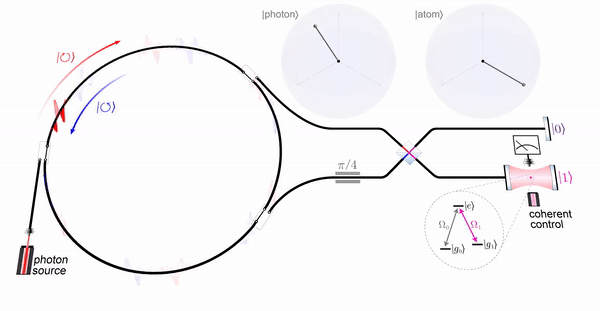Fifth-year applied physics Ph.D. candidate Ben Bartlett, postdoctoral scholar Avik Dutt and electrical engineering professor Shanhui Fan proposed a new computer hardware design in November that could, in principle, outperform modern supercomputers by making use of emerging discoveries in particle physics. This April, Bartlett will defend his dissertation on the design.
Formally, Bartlett studies optical computing architectures for processing classical and quantum information — but he said his more approachable introduction is to say, “What I do is basically tricking light into doing useful computations.” Dutt began working in Fan’s research group at the Ginzton Laboratory around the same time as Bartlett came to Stanford in 2017.
The researchers’ design focuses on the uses of quantum states and the related optimizations that may be out of a classical computer’s reach.
“Quantum” is a term used in chemistry and physics to describe incomprehensibly small units of energy or matter and the laws that govern them. More recently, this word has found a home in computer science, and several new ideas surrounding its usage are proving to be potentially useful for circuits and algorithms.
Classical computers distill programs into a combination of basic instructions, such as arithmetic, control flow and bitwise operations, that can be performed, often in a central processing unit, to complete tasks. Expanses of data and programs can be represented in hardware with a series of eight-digit binary numbers called “bytes” — all of which have a one bit (meaning it is switched on to high voltage) or a zero bit (meaning it is switched off to low voltage) in the place values.

Quantum computers, on the other hand, exploit specific phenomena in particle physics — namely, superposition and entanglement — to achieve something more: the representation of a one and a zero simultaneously. This quantum bit, also known as a “qubit,” does not necessarily behave under the laws of Newtonian physics, where objects’ properties can be clearly measured. In the quantum realm, the properties of particles exist probabilistically.
“You can take any classical program and compile it to a sequence of Boolean operations and Boolean logic gates,” Bartlett said. “This is the same idea here except that instead of having gates that flip bits conditional on other bits, you have gates that will rotate the state of your qubit.”
Before writing the paper, Dutt said that he experimented with synthetic time dimensions, which are dimensions measured in terms of time, frequency or some such means other than space. This concept came up in his work with Bartlett as they endeavored to encode quantum information.
“When Ben brought in the quantum computing angle, that seemed like a very natural way to combine both these concepts and make something that’s scalable,” he said.

With the manipulation of entangled photons, bitwise operations can be teleported from one place to another in the computer, whereas typically particles would have to reconfigure themselves by physically traveling through logic gates, according to Barlett. Theoretically, all that it takes is one qubit to control all the others in the computer, and a program may be written and translated to the appropriate sequence of operations for this case, he added.
The compiler outlined in Bartlett’s paper takes an arbitrary quantum circuit and breaks down each gate into photon- or atom-scattering interactions. From there, the basic instructions can be written as “Assembly pseudocode” and further abstracted to a classical programming format.
Many algorithms running on such a circuit can be defined with Fourier transforms, a common subroutine in the field, and compiled into a set of instructions that uses six primitive physical actions, such as opening logical switches, closing optical switches and sending out laser pulses.
A computer with performance capabilities as robust as that of Barlett, Dutt and Fan’s design would need to be built with specialized equipment, in most cases, and would need to be chilled to the temperature of interstellar space. Their design, however, could be built from readily available materials and run at room temperature in the near future, according to Bartlett.
There is immediate potential for the researchers’ quantum computer design to be used for optimization algorithms, search algorithms and new methods for discovering chemical compounds in the pharmaceutical industry, according to Dutt.
While theoretically promising, the researchers’ design is not meant for all cases. Dutt cited enhanced cybersecurity and the ability to compromise existing digital security protocols as examples for which their computer was not specifically designed.
Barlett said he hopes someone will implement his team’s design in the future, but he anticipates real-world creations may differ from the proposal.
“I don’t think this particular computer architecture will be how quantum computers are made in the year 2070, but for a device that can be built immediately and realized in a lab right now with all of the technologies and components that we have available today, it’s as simple as we can possibly think to make it,” Bartlett said.
